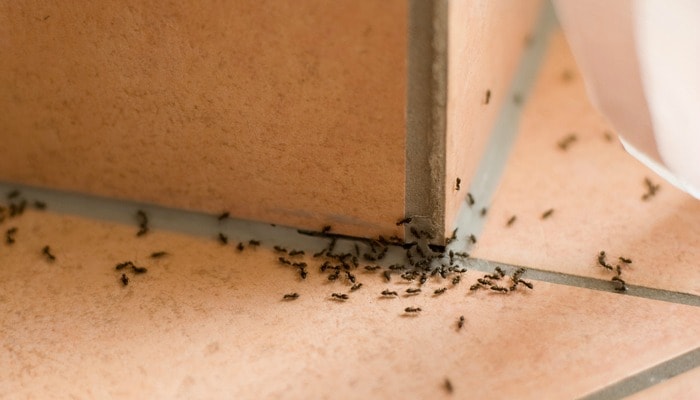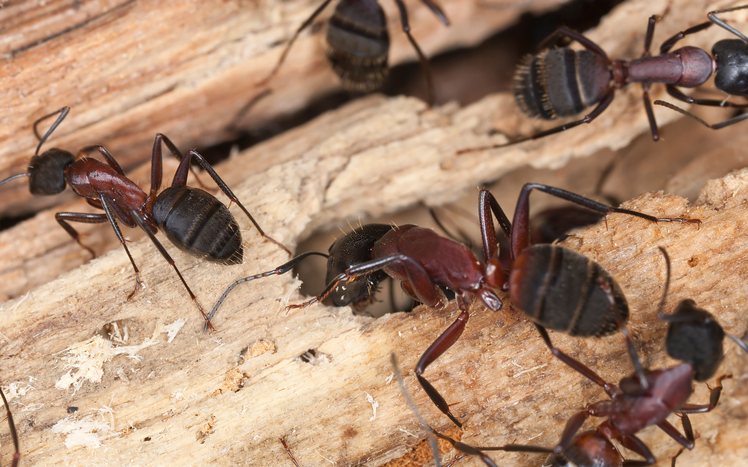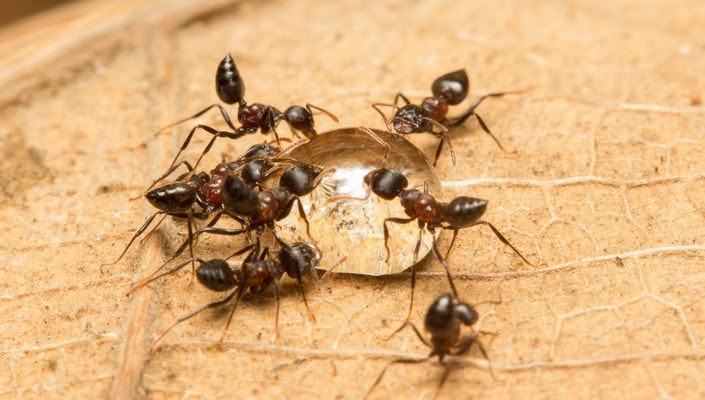The last thing you want to discover in your home is an ant infestation. After all, ants can get into your food, damage your home, and bite you and your loved ones.
But an ant infestation can happen in any home, regardless of how clean it is. That’s why it important for you to learn how to get rid of an existing ant problem before it gets worse.
So, keep reading, and you’ll learn about the most common ants in Columbia, Maryland, as well as several ant pest control strategies you can use to get them out of your home for good.
4 Common Types of Ants in Maryland
Carpenter Ants
These ants are a major problem for Maryland homeowners because of how destructive they can be to any wood in your home. While carpenter ants don’t eat wood like termites, they do bore into and destroy wood for the purpose of building and expanding their nests.

As far as appearance, these pests are usually black in color and among the largest ants in the Unites States. If you’re trying to determine whether or not your home has become infested with carpenter ants, look for these signs:
- An unusual rustling sound coming from wooden structures
- Wood shavings mixed with dead ants on your floor (this indicates nesting activity)
- A large presence of live, winged ants foraging for food
If all 3 of these signs are present, it’s likely that you have a carpenter ant nest somewhere in your home. You should act fast to get rid of the ant problem before these ants cause significant structural damage to the wood in your home.
Odorous House Ants
Have you noticed an unusual, unpleasant smell in your home along with the presence of ants?
If so, your home could be infested with odorous house ants. These ants produce a foul odor similar to that of rotten coconut when they are crushed.
You can identify an odorous house ant by its unevenly shaped thorax, its small size (up to 3.25mm in length), and its color (dark brown or black). You may have an infestation on your hands if you notice a large group of foraging worker ants, but their signature smell is the easiest way for you to determine whether or not the ants in your home are odorous house ants.
Thief Ants
These ants were named appropriately because of their habit of building nests close to other ants’ nests and stealing their food. Like many other types of ants, they feed on proteins, greasy foods, and dead insects.
You can typically identify a thief ant by its unusual yellowish brown color. However, they can also be red with black markings. There’s a good chance you have an infestation if you notice several worker ants that are either of those colors.
Acrobat Ants
While these ants aren’t literally acrobatic, they do have a unique habit of swinging their abdomens up to keep potential predators away.
To determine whether or not an ant in your home is an acrobat ant, look for a distinctive heart-shaped abdomen. Also, keep in mind that these ants are also light black to brown in color, and they have a habit of feeding on honeydew.
How to Rid Your Maryland Home of Ants
If you’d rather not use ant sprays and poisons inside your home, you can also choose to starve ants out by taking away their food sources. Here’s how:
- Regularly wipe down all of the surfaces in your home – especially those in your kitchen. It’s not enough to remove visible food from your kitchen counters. Since ants feed on food residue that you can’t see with the naked eye, you must wipe that residue away to starve them out.
- Store all food properly. An ant’s size makes it easy for them to crawl into a tiny hole or opening in any bag of food. When you buy bagged food, remove it from the bag and place it in a tightly sealed plastic container. That way, ants have no entry point to contaminate your food.
- Avoid leaving food out – even for a short time. If you’ve just cooked a meal, put the leftovers away quickly so the scent doesn’t attract ants and other pests into the kitchen.
If you want to approach your ant infestation more aggressively, try one of these ant pest control methods:
- Vacuum the ants up. When you do this, it’s important that you put a substance that kills ants (like talcum powder) in the vacuum bag when you dispose of the ants. Otherwise, the ants may survive and live inside the vacuum.
- Create your own ant spray. Mix 1.5 teaspoons of dish soap and 1 teaspoon of alcohol in a spray bottle, and fill the rest of the spray bottle up with water. Shake the spray bottle to make sure the solution is mixed well. Then, you can start spraying the ants and clean up their remains.
- Kill the queen with a borax bait. You can make this bait at home, and when the ants come into contact with it, they’ll take it back to their nest. Then, the queen and the ant colony will die from coming into contact with it.
- Use a fogger. Foggers typically get rid of ants fast and keep them out for months at a time. However, you and your loved ones must stay out of your home while the fogger is in use to avoid being harmed by the chemicals released.
- Use ant spray. These sprays often kill ants on contact, and some of them also repel ants for weeks at a time.
If you have a serious ant problem, you may want to hire an ant pest control team to get rid of the pests. Here at Brody Brothers Pest Control, we help homeowners and business owners in Columbia and the surrounding areas get rid of pesky ants for good, and we’d love to help you next! For more information or to request a quote, contact us today.

